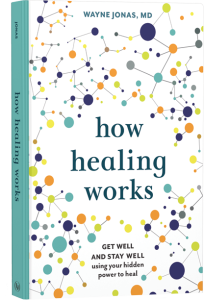Did you develop some less-than-healthy habits during the pandemic? Here’s how to shift back this spring and summer.
Whether you were turning to food for comfort or just nibbling between video meetings and home-schooling sessions, you may be among those who let healthy eating habits slide in the past year.
An informal poll revealed some other habits people developed in 2020 including drinking more alcohol, retreating into screen time, shopping online too much, and neglecting exercise.
You may also have developed some unhelpful mental and emotional habits, such as thinking pessimistically, catastrophizing, isolating yourself (not just to stay virus-free), or obsessing over news and politics. If any of these feel familiar, read on for ways to tackle and replace them with healthier mind-body practices as we emerge from the pandemic.
Returning to healthy eating
One medical clinic surveyed more than 2,000 people about their pandemic eating habits and found that 6 in 10 respondents gained an average of about 10 pounds each. Most attributed this to feeling less concerned about their appearance since they were not going out, being around more food at home, and exercising less.
In October 2020, an American Psychological Association (APA) survey also found weight gain in 6 in 10 adults, with a much higher average of 29 pounds. This is concerning not just because extra weight raises the risk of heart disease, diabetes, cancer, and other conditions, but because obesity is a leading risk factor for getting severe COVID-19.
As important as knowing what to eat is knowing why you eat. For some, food can be loaded with meaning and emotion. Food is family, tradition, comfort, and sometimes even used to de-stress and self-medicate. When you use food or alcohol for emotional reasons, you might overeat or make unhealthy choices. It can be easy to overeat or drink too much alcohol out of stress, anger, depression, anxiety, frustration, or loneliness.
If you snack due to stress, here are some tips to build a more positive relationship with food and stop emotional eating.
Remembering that eating has a social side helps, too. Some people have eaten with family members more often in the last year, while those of us who live alone or with few other people have been more isolated. If you feel comfortable doing so, pick a local restaurant to support, perhaps on a weeknight when they aren’t as busy, and practice enjoying an evening out while helping a small business get back on its feet. Or fill a plate for family members who can’t eat with you, such as essential workers, and sit with them when they do get home to eat.
Finally, cleaning out the fridge can help you switch from pandemic comfort foods to summer staples like fresh greens and beans. Check out our free Mediterranean Diet Pocket Guide, to see what to stock your fridge with, make a list of foods that sound good, and start adding them to your grocery lists. It helps to focus on what you want to add to your diet rather than what you want to take away.
About shopping, cooking, and delivery
One final note: you may have gotten used to ordering groceries online or having meals delivered. While these things can help prevent infection, they also lower your physical activity level. If your health and risk level allows, consider planning a traditional shopping trip for social benefits, mental stimulation, and physical movement. (You can even walk to the store!) To prevent spreading germs, of course, you can wear a mask, sanitize the cart or basket handle, and wash your hands well when you return home – a good idea at any time.
Despite the social benefits of eating out now and then, you may want to be mindful that restaurant food tends to be richer than the food you cook at home. (Butter, fat, and salt are a big part of “restaurant quality flavor.”) If you’ve been ordering a lot of takeout and delivery, you may want to prepare more food at home now or limit restaurant food to one meal a week in a nice family restaurant instead of several fast-food meals.
Enjoying alcohol safely
The APA’s survey of pandemic habits found that 1 in every 4 adults said they drank more alcohol to cope with stress during this time. Of these, more than half were parents of young school-aged children (age 5 to 7).
The CDC and other leading health organizations recommend no more than 1 drink per day for women and 2 for men. If you’ve pushed those limits recently, you may want to check out the Harvard Health newsletter article “11 Ways to Curb Your Drinking.”
Substituting another beverage you enjoy (our favorites include seltzer, elderberry tea, and in warm weather, iced tea), making a mocktail with cranberry juice, club soda, and lime, or simply sipping your adult beverage instead of gulping it can help you develop healthier habits. If you’ve been drinking more to soothe yourself, try taking a short walk before dinner instead. Changing your inner script from, “The global pandemic is terrifying!” to “Things are reopening and I want to stay healthy,” may help.
And if you’re wondering if you need more help to cut back or stop drinking, check out the free and confidential NIAA Alcohol Treatment Navigator. They have no commercial sponsors and list a variety of options.
Breaking out of isolation
We recently wrote about the power of relationships as we age. Having close friends and relatives has been found to be a key to good health for middle-aged and older women in one large study. The same study found that a lack of social connections was harmful to physical as well as mental and emotional health.
You may have been as conscientious as Leslie, 72, and her husband Bob, 81, during the past year. Both are very aware that they are in a higher risk category for severe COVID-19 illness and even death due to their age and other factors, including obesity for Leslie and type 1 diabetes for Bob. For a full year, they have limited their social contacts to their adult son, phone calls and Facebook updates with friends and other family members, and attending the live-streamed services at their church. This summer, however, they plan to return to seeing family and friends, attending church in person, and going to their favorite drive-through restaurants and classic car cruise-ins. They know these interactions can boost their health and well-being.
Or you may know someone like Dylan, for whom isolation has taken a mental health toll. Months of lockdown in his high-rise Seattle apartment mean he has hardly spoken to anyone face to face lately. Dylan last set foot in a grocery store in March 2020, and last traveled in 2019. If avoiding the virus has meant avoiding all social contacts for you, too, you may benefit from a relationship checkup. A recent New York Times article called “How to Dust off Your Social Skills,” can help Dylan and others ease back into in-person interactions.
Changing negative talk
“I would never forgive myself if I gave my husband COVID-19.”
“I can’t believe how close these people are standing to us!”
“My neighbors are having some friends over. They obviously don’t care about safety.”
“Things will never be the same again.”
These are all examples of the negative self-talk that has flourished during the pandemic. The US Department of Veterans Affairs’ National Center for PTSD serves a large population of people with PTSD and has published a helpful guide to negative statements and some ways to speak back and counter them, Helpful Thinking During the Coronavirus Pandemic.
Without being a Pollyanna – unreasonably optimistic – you may also want to reflect on the negativity coming into your life through information channels. See two friends having a word war on Facebook? Click away instead of reading every negative comment. Are you constantly getting news or Twitter notifications? Just turning those off can lower your stress level. Learn how the news tends to skew negative and how this can affect your mental health in this pre-pandemic article at www.GoodTherapy.org.
Need to take drastic measures? Turn off – yes, turn off – notifications on your phone. Replace watching the morning news with a DIY video, travel show, exercise video, or meditation video like this one from Dr. Wayne Jonas.
Moving forward in health
As you emerge from your pandemic cocoon, you may want to try completing our free Personal Health Inventory. It can give you a picture of how you are doing that may surprise you. It can be a good discussion guide for you to bring with you to your next doctor’s appointment.
You may also want to keep some habits you developed during the pandemic. If you’ve been cooking more, scheduling video calls or game nights with family, or walking the dog every day, you may not want to give up those habits. Mindfulness about what you are doing each day is an important part of overall health.
Ready to change one (or more) pandemic habits? We have two free tools for you this month: Creating Change, an interactive plan for figuring out what needs to change and following through, and Building Confidence, a short series of journal prompts that help you gather the courage to change.
References:
[i] Advanced Dermatology. Health trends during the pandemic. Retrieved from https://www.advdermatology.com/blog/unhealthy-habits-and-weight-gain-statistics-covid-19-pandemic/ [ii] American Psychological Association. One year later, a new wave of pandemic health concerns. Retrieved from https://www.apa.org/news/press/releases/stress/2021/one-year-pandemic-stress [iii] National Library of Medicine. Health behaviors, social networks, and healthy aging: cross-sectional evidence from the Nurses’ Health Study. Retrieved from https://pubmed.ncbi.nlm.nih.gov/10855345/
 Take Your Health Into Your Own Hands
Take Your Health Into Your Own Hands
Drawing on 40 years of research and patient care, Dr. Wayne Jonas explains how 80 percent of healing occurs organically and how to activate the healing process.

